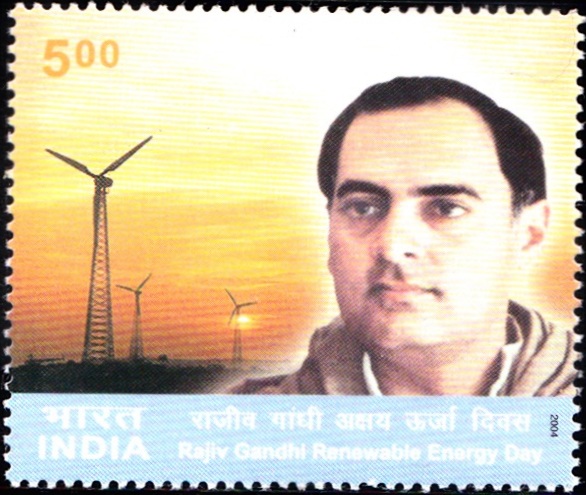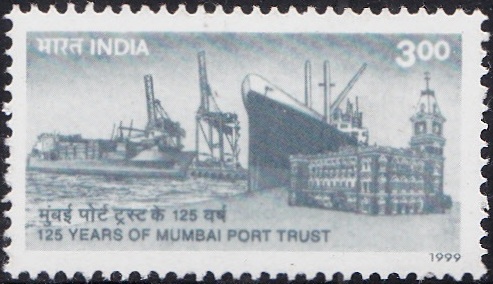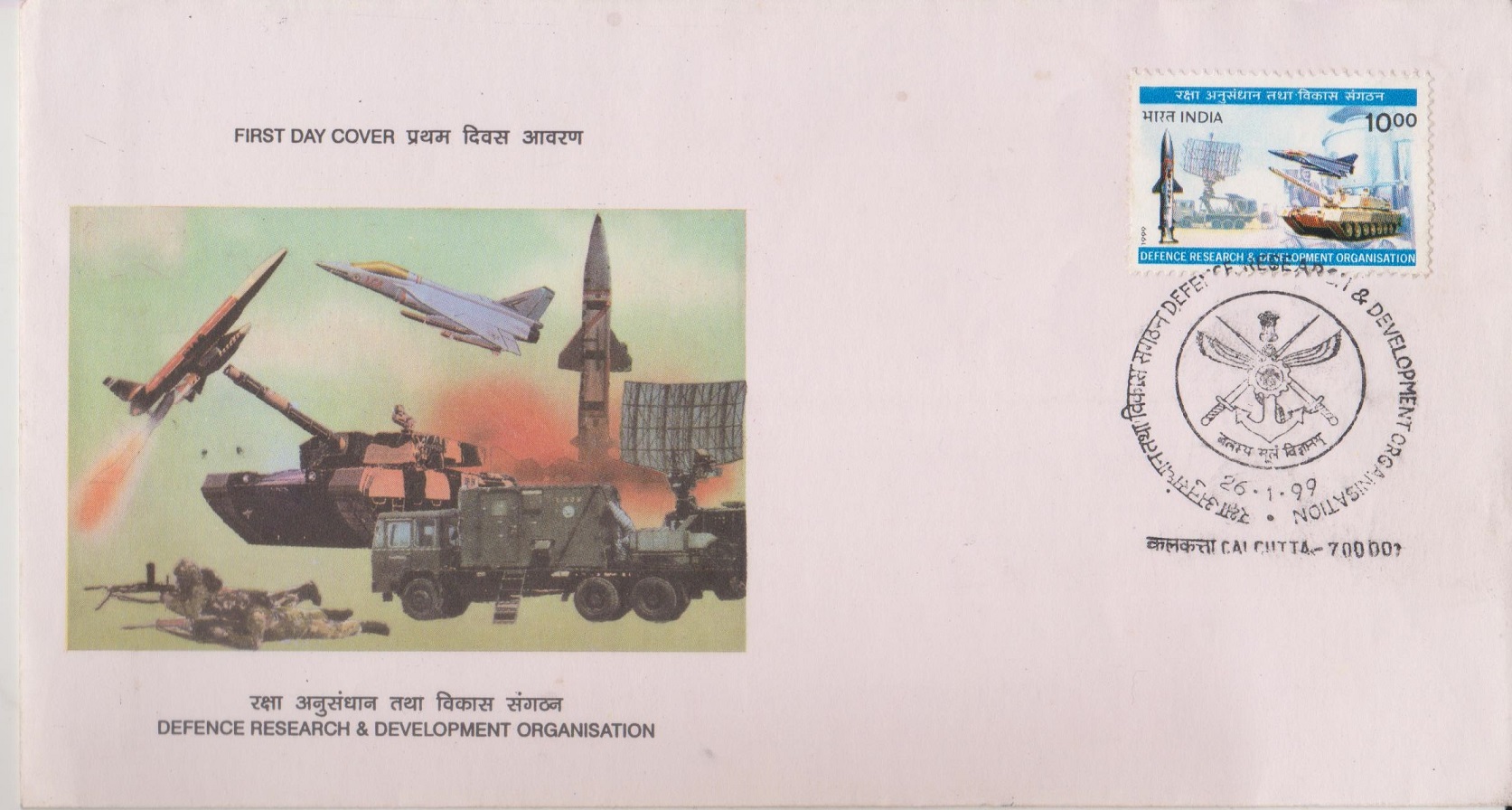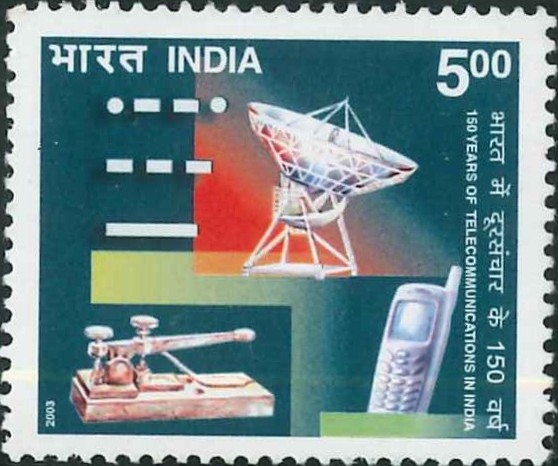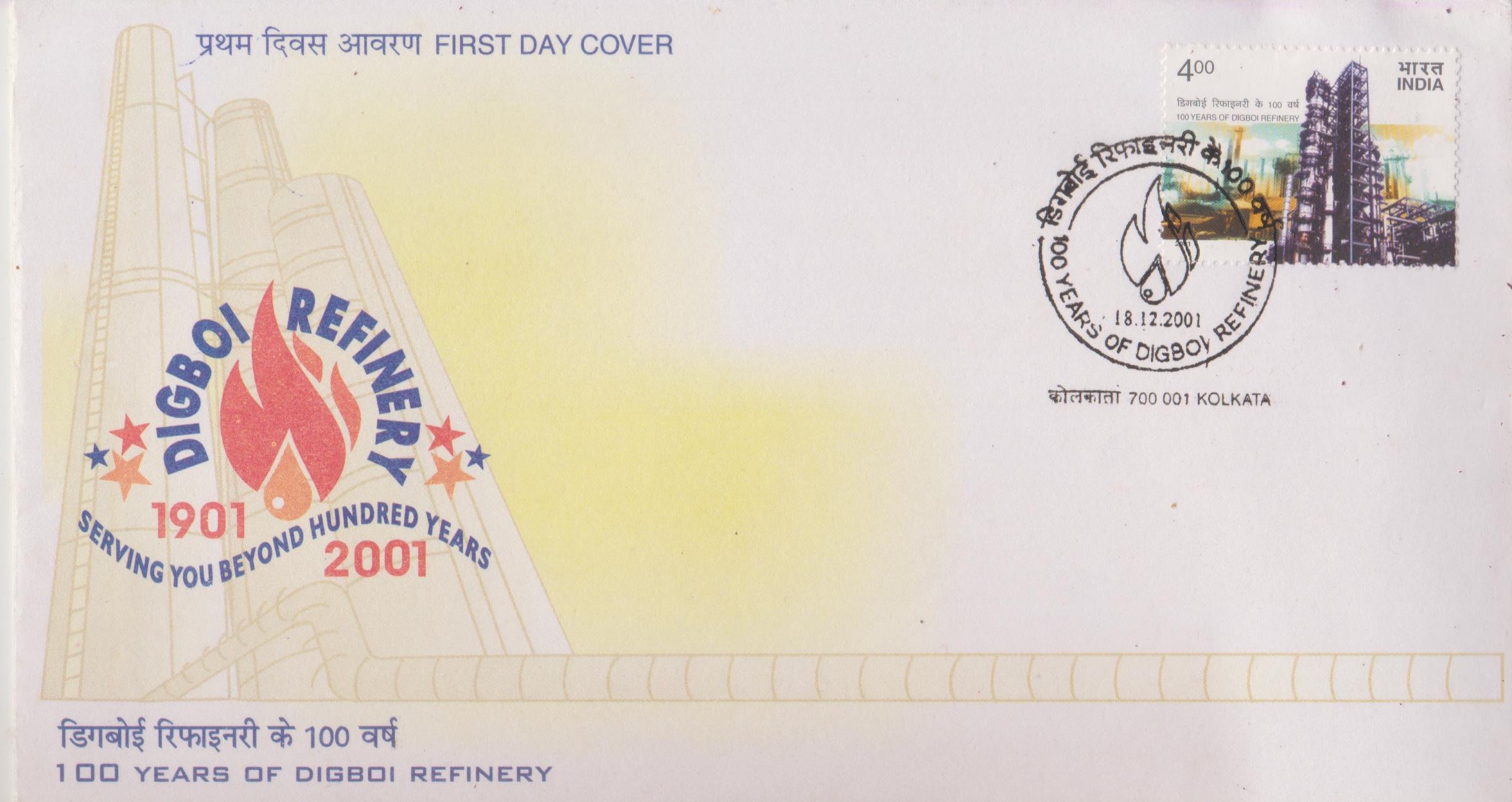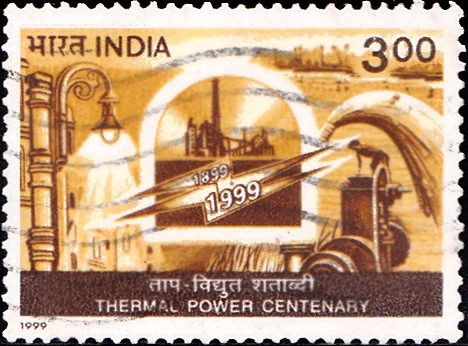
Thermal Power in India
A commemorative postage stamp on the Centenary (1899-1999) of the Thermal Energy Power in India :

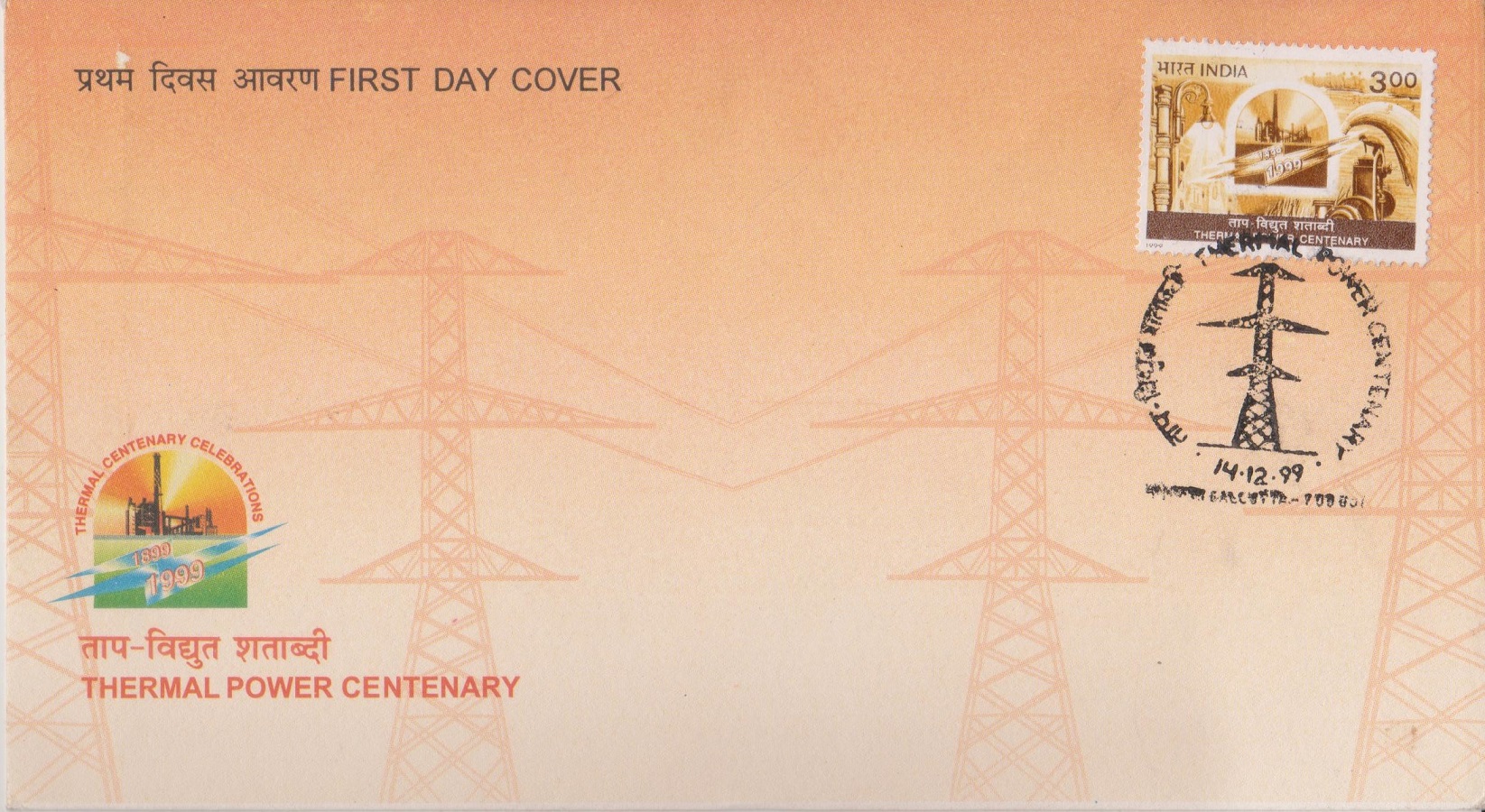 Issued by India
Issued by India
Issued on Dec 14, 1999
Issued for : The Department of Posts is happy to commemorate the centenary of Thermal Power in India by issuing this postage stamp.
Credits :
Stamp & FDC : M/s Inter Publicity Private Limited
Cancellation : Alka Sharma
Type : Stamp, Postal Used
Colour : Two Colour
Denomination : 300 Paise
Overall size : 3.911 x 2.895 cms.
Printing size : 3.561 x 2.545 cms.
Perforation : 13 x 13
Paper : Imported un w/m Adhesive Gravure Coated Stamp Paper in Sheets 50.8 x 53.5 cms.
Stamps Printed : 0.7 Million
Number per issue sheet : 35
Printing Process : Photogravure
Printer : India Security Press, Nashik
About :
- Thermal Power generation, the major contributor to power availability in India, started with the commissioning of a 1 MW Thermal Power Plant at Calcutta in 1899 which was owned by the Calcutta Electric Supply Corporation. Over the one hundred years, the total thermal power generation capacity of the country has witnessed tremendous growth and is today about 67,000 MW.
- Wish the commencement of National Five Year Plan in 1951, the State Electricity Boards under the provisions of the Electricity Supply Act, 1948 took up power development programmes. Apart from this, joint venture projects like the Damodar Valley Corporation and non-government utilities also joined the task of building a national power base. The thermal development during the first two decades after the commencement of the First Five Year Plan was aimed at providing quick availability of power for industrial development envisaged in the National Plan. The Government of India’s decision to utilise low grade coal for power generation ushered in the commencement of thermal generation through use of pulverised coal. The seventies saw thermal power development with generating capacities being added under different aid programmes of friendly countries. The individual units were of 50 to 80 MW sizes. Nationalisation of coal industry, indigenous manufacture of generating units and entry of Central Sector directly into power generation brought about a significant change in thermal generation scenario when generating units of higher capacities upto 500 MW were inducted in the power generating system.
- Technological improvements were introduced in management, operation & maintenance, control & instrumentation and other related aspects of thermal power generation during the period.
- With the increase in thermal generation, the concern for environmental safeguards is inevitable. Stringent environmental regulations have been introduced by the Central Pollution Control Board as well as the State Units for the protection of the environment from the emissions of the thermal power stations. Liberalisation of government control on power development programmes making it open to the non- government/private sectors has been another significant development.
- Thermal power generation is expected to dominate the power generation scenario of the country in the coming years also. The anticipated requirement of capacity addition during the next two decades is 10-12,000 MW every year. Nearly 75% of this may have to be through the thermal route. The resources needed for such massive development will have to come mainly from various sources within the country and abroad. There is also considerable scope for the non- government sector to exploit the opportunity offered in this scenario.
- Text : Based on material furnished by the sponsors.
Subscribe
Login
0 Comments



